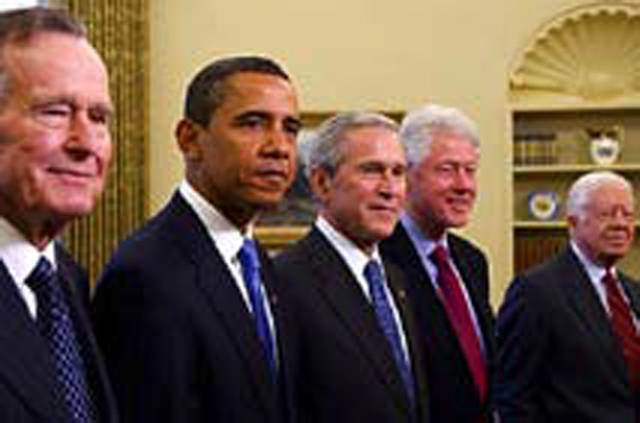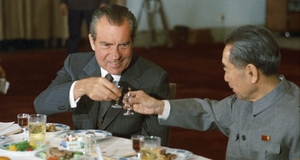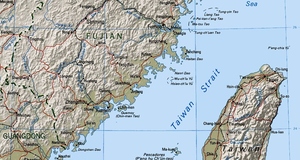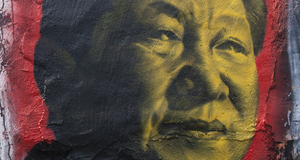From Cornell International Affairs Review VOL. 4 NO. 1The Same Bed: Articulating a Continuity Thesis in US-China PolicyWhence the Misperception? US Congress, the Executive, and China PolicyIn his influential 2000 work Same Bed, Different Dreams, David M. Lampton asserts that “one key to the productive management of the relationship between the United States and China is effective and secure political leadership in both nations. To that end, individuals are of enormous consequence.”23 If that were the case, however, the different priorities, ideologies, and personalities of all recent U.S. presidents would have yielded foreign policies distinct from one another in ways that the actual evidence does not support, and in fact actively contradicts. Writing at the end of George W. Bush’s term – and with the advantage of 8 years’ hindsight not afforded Lampton - Wang supported this view: “While the composition of the Bush administration’s second-term cabinet combines continuity with change, those with backgrounds in Sino- U.S. relations and those without, and strong, controversial public figures with relative unknowns, the China-U.S. relationship does not seem so different form what it was by the end of the Clinton administration”24 Indeed, despite the significant disparities among the three presidencies, their generally unanimous adoption of strategic partnership with respect to the PRC signals that other, systemic and entrenched forces are at work. What, then, may explain the vehement and often controversial policy debate within the U.S. government and the wide range of discussion regarding China policy when the outcome is generally predictable? What factors continue to mischaracterise U.S. China policy as a “rollercoaster,”25 and cause indignation over supposed “concessions”? Perhaps the most viable explanation for the dearth of an established continuity theory finds expression in the traditionally antagonistic positions of Congress and the Executive in forming China policy. Particularly illustrative of this dynamic are the differences in opinion between the two branches during George W. Bush’s rapprochement with the PRC following his initially hostile relationship. While the Executive’s priority was to highlight the importance of cooperation with the PRC, Congress was awash in bills proposed to counter one threat or another posed by the PRC; according to The Economist of April 7, 2007, almost a dozen anti-China bills had already been introduced in the U.S. Congress since the beginning of that year. Washington and Beijing engaged in tit-for-tat bans on imports of foodstuffs and other goods. Newspapers and policy journals were saturated with articles predicting a serious crisis in bilateral relations. China’s rising influence in Asia, its rapid program of military modernization, its aggressive search for secure energy supplies, its periodic saber-rattling toward Taiwan, and its refusal, or inability, to clarify ultimate intentions encouraged understandable fears about the security of American interests.26 Although Vice President Dick Cheney eventually “took up the theme previously articulated”27 questioning the motives behind China’s growing military reach at the time and thus played a role in fuelling anti-Chinese sentiment, the difference in intensity between Executive and Congressional condemnation is striking. Indeed, as Hathaway notes, veteran Washington Asia-watcher Chris Nelson has observed that “every president since the 1970s has had a dual China problem: managing ties with Beijing while simultaneously countering congressional calls for a tougher policy toward the PRC.”28 The reason for such a surprising ideological cleavage between the two branches, Hathaway proposes, is that China policy does not divide along either partisan or ideological lines. Because one party in the American two-party system is always “out,” “that party can usually be counted upon to be pushing for a harder line on China.”29 This dynamic, however, is as old as U.S.-PRC relations themselves. When the Carter White House transferred recognition of China from Taipei to Beijing, Congress “balked.”30 In response, it passed the Taiwan Relations Act - affirming and obliging U.S. preparedness to defend the national security of Taiwan. Lee Teng-Hui’s conflict-ridden visit to the United States was the result of Congressional granting of a visa, to which Clinton eventually (and surprisingly) agreed. In fact, the decision “challenged Clinton administration public policy statements and private reassurances to Chinese leaders that such a visit was contrary to U.S. policy toward Taiwan.”31 In yet another instance, immediately before Clinton’s visit to China during which he professed the Three No’s in concession to Beijing, the Senate voted 92 to 0 and the House 411 to 0 in resolutions intended to remind the president of the Taiwan Relations Act.32 Despite the significant disparities among the three presidencies, their generally unanimous adoption of strategic partnership with respect to the PRC signals that other, systemic and entrenched forces are at work. Other explanations could include the powerful influence of special interest groups – for instance, Hollywood pushing for copyright infringement legislation, or North Carolina textile workers demanding a halt to cheap Chinese imports. Their influence comes from the considerable ability of such interest groups to wield power within the American political system in comparison to other nations. Furthermore, this paper posits a last reason for the perceived volatility in U.S. foreign policy regarding China; that of a marked lack of historical awareness on the part of American legislators and incoming presidents in regards to the complexities of Sino-American bilateral relations. Inherent in this study is the hope that in understanding the history of engagement with the PRC, U.S. foreign policy will stand to gain from reduced opposition and increased soundness of policy prescriptions. ConclusionThis study seeks to firmly establish a continuity theory in regards to U.S. foreign policy towards China that can tie together the policies of the last four U.S. presidents as the continuation of a single actual policy. In an even grander and innovative33 scope, it strives toward an equally sustained continuity in this policy of engagement stretching back to Nixon’s and Kissinger’s opening of diplomatic relations with the PRC in 1972. Instances such as Reagan’s granting of political asylum to the Chinese tennis player Hu Na in 198334 (before the resumption of annual summits with the Soviet Union in 1985 signalled a lessening dependence on Beijing); as well as the 1982 joint communiqué pledging the U.S. not to exceed the 1979 amount35 of military aid to Taiwan36; up to and including George H. W. Bush’s 1989 secret dispatching of diplomats to Beijing in the Tiananmen aftermath, establish a credible record of engagement with the PRC during the Cold War. Such a historical record matters in policy debate because it has a great effect on actual diplomacy crafted and pursued by incumbent presidential administrations. In his initial articulation of China policy upon entering office, Obama does indeed present a shift in policy with regards to the last two presidents. However, as should be clear by now, this shift signals little else than a bit more honesty on the part of an incoming president. Sharp criticism in the wake of Obama’s first expressions of his policy following his visit to China–even in sophisticated discourse–unfortunately reflects a traditional understanding of the bilateral relationship with the Cold War that falls short of explaining the full scope of Sino-American relations and, especially, its U.S. policy. The New York Times reports that “in the United States, Obama’s coining of the phrase ‘strategic reassurance’ has been attacked by conservative commentators, who argue that any reassurance that the United States provides to China would be an acknowledgment of a decline in American power.”37 Moreoever, in an op-ed article in The Washington Post, the analysts Robert Kagan and Dan Blumenthal argued that the policy had echoes of Europe “ceding the Western Hemisphere to American hegemony”38 a century ago. “Lingering behind this concept is an assumption of America’s inevitable decline,” they wrote. As the policies of George W. Bush, Bill Clinton, and George H. W. Bush make exceedingly clear, the sort of engagement and negotiations being pursued by Obama are not only not new; they are sound from the perspective of U.S. presidential administrations for well over two decades and will continue to set the tradition for the bilateral relationship in the future. While the U.S. will remain highly critical of China’s human rights abuses and be militarily ready for a conflict over Taiwan, it will mute its harshest language and actions in order to ensure a peaceful coexistence between the two and an avoidance of conflict in the Far East that, as far into the future as we can see, is mutually regarded as a sort of renewed concept of “mutually assured destruction.” In stark contrast to the Soviet Union of the 1950s and 1960s, however, China faces not just the U.S.; it faces a Western-centred system that is open, integrated, and rule-based, with wide and deep political foundations. As Wang revealingly points out, on the eve of the 2004 U.S. presidential election, “Yan Xuetong, director of Tsinghua University’s Institute for International Studies, commented that ‘whoever wins the election, there’s no need to worry because they will adopt the same policy, especially on the Taiwan issue…If there is some change, it will be superficial.”39 Much the same could be said of the 2008 campaign, the 2012 campaign, and the following two or three. Beyond that, an emerged China may very well be playing a diplomatic game different from the one it has hitherto pursued, which will require a different set of diplomatic responses from the United States. Endnotes
Photos courtesy of:
Suggested Reading from Inquiries Journal
Inquiries Journal provides undergraduate and graduate students around the world a platform for the wide dissemination of academic work over a range of core disciplines. Representing the work of students from hundreds of institutions around the globe, Inquiries Journal's large database of academic articles is completely free. Learn more | Blog | Submit Latest in International Affairs |




















